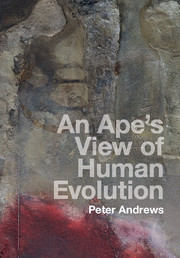1 - How can we recognize common ancestors?
Published online by Cambridge University Press: 05 January 2016
Summary
There are many issues that challenge us today in our investigations of the natural world. One that has always fascinated me is the structure of the universe and our position in it; and in a way following on from this, we can ask what is the nature of life and in particular how did humans evolve. The first is the stuff of astronomy, and with advancing technology we see many things today that we could not even have begun to predict in the past. The second is driven by our fascination with the world around us and in particular with ourselves, our origins and our place in the world.
It used to be thought that all we need to know about our evolutionary history will be resolved by finding more and better fossils, in the same way as it used to be thought that to understand the universe all we need is bigger and better telescopes. For both lines of inquiry, however, it is increasingly being recognized that what we really need are new ways of looking at things, at stars and cosmic rays in the case of astronomy, and at our genetic history and fossil environments in the case of human evolution. It is not enough now to find earlier and better fossils of ancestral humans; we should rather be seeking to understand their place in the web of life and their interactions with the ecosystems in which they once lived. This can be followed throughout human evolution, but of particular importance is the time when the human lineage first appeared. Can we identify our common ancestor with our closest primate relatives, or as some put it, the missing link in human evolution?
There are in fact many ‘missing links’ in human evolution, and Charles Darwin devoted two chapters of his book The Origin of Species to the problems in identifying them. Missing links are transitional forms between species, and Darwin was concerned with their apparent absence, both in living species, which he discussed at length in Chapter VI, and between related fossil species, discussed in Chapter X.
- Type
- Chapter
- Information
- An Ape's View of Human Evolution , pp. 1 - 18Publisher: Cambridge University PressPrint publication year: 2016



